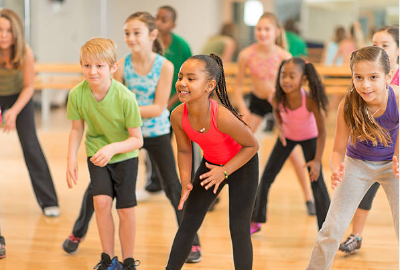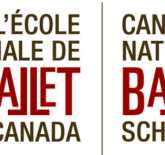Three Easy Ways to Get Your Students Dancing This Year!

Previously published in Volume 85, Issue 2
With the start of another school year, you likely already have great ideas about how to get your students more active and engaged this year. But here’s an idea we’d love for you to consider more deeply: Dance.
At Canada’s National Ballet School (NBS), we know that dance is a powerful, yet underutilized tool for education, health and well-being across all spectrums of Canadian society. For kids, ongoing involvement in dance can:
- Build physical literacy
- Foster a love of movement and desire to be physically active for life
- Increase social and communications skills
- Strengthen bonds with peers
- Improve self-esteem and self-confidence
- Encourage young people to work from their own experiences and abilities, communicating thoughts, emotions and ideas through movement
Canada’s National Ballet School (NBS) has developed a free suite of bilingual, online resources that help educators engage students in high-quality dance activities. No dance experience is necessary to facilitate NBS’ Kids programs! These programs empower educators and community leaders to engage youth in fun, creative and healthy learning and activity.
“NBS provides a stimulating means for all kinds of learners to get active . . . It’s contagiously appealing and inspiring for the students, compelling them to participate wholeheartedly.”
– Lili Steer, Toronto Public School Teacher
ONLINE DANCE RESOURCES FOR TEACHERS
Discover your easy-to-use, one-stop digital resource to access and deliver high-quality dance programs! NBS’ online resources save you time, with high-quality teaching and delivery resources hosted in one convenient, online location. These videos, lesson plans, and additional course content are developed by world-renowned dance experts and teachers—so you can trust that your students are receiving the best programming.
Resource highlights for teachers:
- Resources for ages 6-12
- Printable lesson and activity plans
- Comprehensive video content
- Downloadable music
- An online community for teachers to share experiences and recommendations
- Resources connect to nationally-relevant curricula
- Sample rubrics included
Everything you need to get your students dancing is available at learning.nbs-enb.ca
3 ways to get your students dancing!
1. CREATIVE MOVEMENT ONLINE COURSE
A freely-available course with all you need to confidently introduce creative movement, self-expression and physical literacy skills into your classroom or extracurricular program. In this self-paced course, you will learn about Creative Movement and how it supports the development of the whole child. The course empowers educators in fostering expression, collaboration and creativity while developing fundamental aspects of physical literacy.
2. ACTIVITY LIBRARY
NBS’ Activity Library is an ever-expanding set of resources that are divided into four categories: welcome, warm-up, dance and reflect. All activities are supported by video demonstration and detailed, printable activity plans – and some have downloadable music tracks, too. This library of short activities is ideal for the classroom, community programs and extra-curricular activities.
Many NBS REACH resources also include content developed in partnership with Indigenous artists and communities to highlight Indigenous dance styles, cultures and histories in lessons that are applicable to curricula across Canada.
3. BRAND NEW CROSS-CURRICULAR UNITS – COMING SOON!
This fall, we are launching a series of cross-curricular units that connect dance and creative movement with other areas of the curriculum like science, geography and language! Units include the Lifecycle of a Frog, Exploring Energy, and the study of rocks, poetry and maps.
ABOUT CANADA’s NATIONAL BALLET SCHOOL (NBS)
We are Canada’s National Ballet School (NBS), where excellence, access and inclusion fuel our belief in sharing the transformational power of dance to change lives for the better. NBS knows how dance affects our bodies, minds and souls. We know it because we live it and help others live it every day. NBS’ community initiatives translate 60 years of expertise and excellence in dance education into a range of programs that improve health and quality-of-life for people of all ages, abilities and aspirations.
Register for free access to NBS’ dance resources at learning.nbs-enb.ca
For more information about NBS’ community programs and how to get involved:
- Visit www.nsb-enb.ca/sharing-dance
- Email [email protected]
- Call 416.964.3780 x2114
Photos courtesy of Canada’s National Ballet School.








